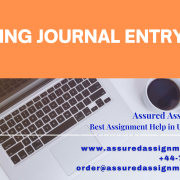Assessment Task 3 – Problem-based Written Assignment– Individual
PERCENTAGE OF FINAL GRADE: 20%
WORD COUNT: 1500 words
HURDLE: N/A
Description
This assessment task asks you to answer three questions. Some questions are scenario-based. The scenarios provide interesting sketches of the challenges individual consumers and firms face due to changed market circumstances, some of which are quite relatable to current events. We therefore hope that you’ll enjoy working through these questions and in the process, you’ll be able to see how the tools and concepts you’ve learnt in Topics 1 and 2 have relevance in the real world.
The assignment is worth 60 marks and carries an overall weight of 20% for the unit.
- Question 1 is worth 3 marks.
- Question 2 has three parts and is worth 37 marks in total.
- Question 3 has three parts and is worth 15 marks in total.
- In addition, 5 marks are allocated for quality of written communication in English as evidenced through your explanations.
- Your total score out of 60 marks will be converted into an equivalent score out of 20 to determine your overall mark for the assignment for this unit.
Please answer Question 1, Question 2 and Question 3 below including all of their sub-parts.
Note:
(i)
For Questions 1 and 2 below, the term “non-alcoholic drinks” represents non-alcoholic beers, wines, and spirits.
(ii)
Compose your written answers to the questions on the assignment (as presented below) in a Microsoft Word Document and insert your diagrams where required as image files into the document in appropriate locations.
You can draw your diagrams electronically, convert them into image files and insert them into your answer document. Alternatively, it is also OK to hand draw your diagrams neatly on white sheets of paper and insert clear and properly positioned scans of your diagrams into your answer document. Instructions on how to do this are available in the document titled “inserting handwritten documents” within the Assess 3: Problem-based Written Assignment folder in Assessment resources.
(iii)
It is also advisable that you submit two versions of your answer document: a finalized Word document which includes explanations as well as images of your diagrams and a PDF version of this document. Both of these documents should be identical in content. “Inserting handwritten documents” file also has guidance on how to convert your word document into PDF. We request two versions for contingency purposes – in case one of your submitted versions becomes distorted or is not readable. We will normally assess only your most recent submission until the due date and time.
(iv)
Since there is no research required for the assignment, referencing is not needed or expected. In case you do refer to materials authored by others, then it needs to be referenced. Please see the guidance provided under the “Referencing” header in this document below.
Question 1 (3 marks)
Listen (or, read the transcript) to the NPR podcast “Non-alcoholic beers, wines and spirits are flooding the market right now” as released on January 4, 2023 via this link.
Based on the discussion of the podcast, explain why it might not be reasonable to assume that all consumers consider non-alcoholic drinks a perfect substitute for alcoholic drinks. (Hint: Make sure to cite specific information from the podcast which is relevant for this explanation).
Question 2 (37 marks)
Suppose that a household has strictly convex preferences towards alcoholic and non-alcoholic drinks. Suppose also that alcoholic drinks are kept on the X axis while non-alcoholic drinks are kept on the Y axis.
(a)
Let denote the price per unit of alcoholic drinks and denote the price per unit of non-alcoholic drinks. Assume that the household has a fixed amount of income, denoted as , to allocate between these two goods. Represent the household’s optimal bundle on a diagram while keeping alcoholic drinks on the X axis. Briefly explain your work.
(b)
Suppose now that rising costs of essentials such as rent, and fuel put a squeeze on the household budget. As a result, the household has less income available to spend on the two types of drinks. At the same time, the federal government raises the excise tax on alcoholic drinks to shore up its tax revenues resulting in a higher price of alcoholic drinks.
Assume that the changes to income available and the price of alcoholic drinks happen simultaneously (i.e., happen at the same time). Let denote the new income level (with ) and denote the new price of alcoholic drinks (with ).
Based on this, reproduce your diagram for part (a) and work further on it to show how the simultaneous changes (to income and price of alcoholic drinks) impact the household’s budget constraint. Explain.
(c)
Now reproduce your diagram for part (b) and work further on it to show how the simultaneous changes (to income and price of alcoholic drinks) might induce the household to change their optimal bundle. Make sure to show and explain all the details including substitution and income effects (and the relevant preference assumptions you need to make to show these).
Question 3 (15 marks) (you may round your calculations to 2 decimal places where necessary for this question).
Carefully observe Figure 1 below.
Figure 1
(a)
What assumption does Figure 1 make about the nature of the production function of a firm and what does point A represent? Explain your answer.
(b)
Reproduce Figure 1 provided in the question. By making appropriate inferences from it, work further to show a new isocost line for the cost level of $1000 on the same figure, if wages fall by 10% while the rental rate on capital increases by 20%. Explain your work carefully.
(c)
What input combination will the firm use to produce output level of 100, if wages fall by 10% while the rental rate on capital increases by 20%? Explain your answer.
Note: As stated at the beginning, in addition to the three questions above, 5 marks are allocated towards the quality of writing.
End of Assignment











